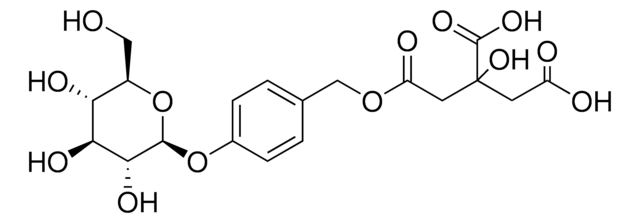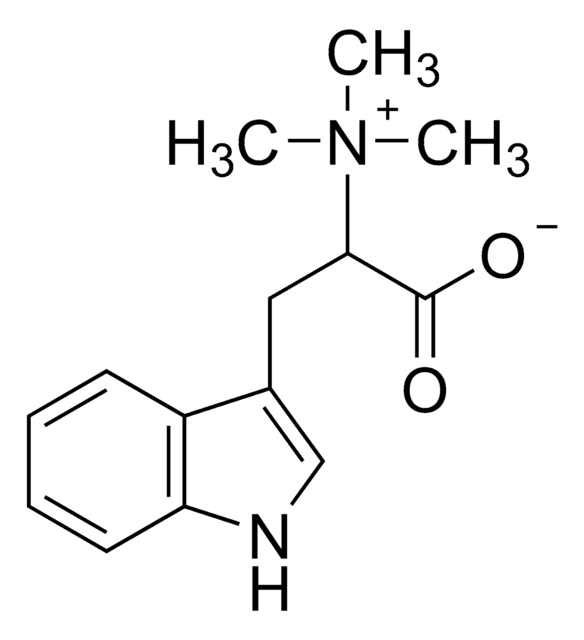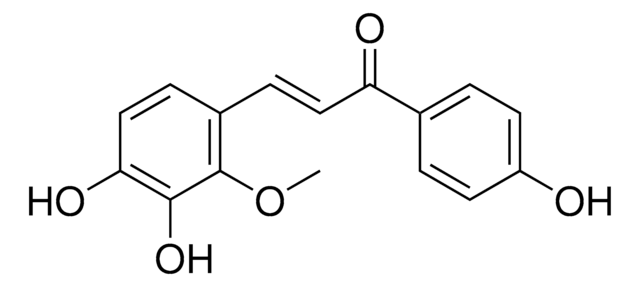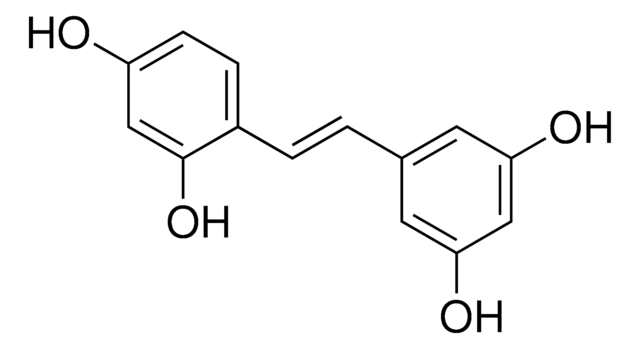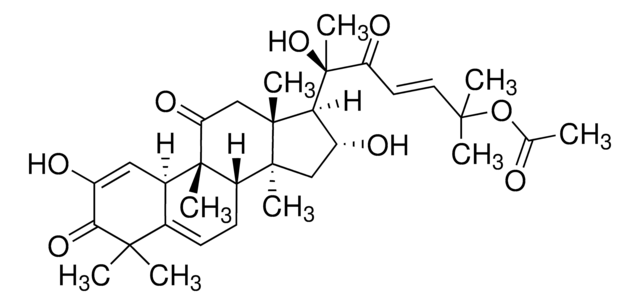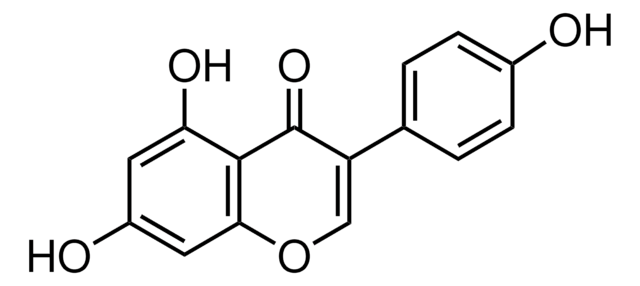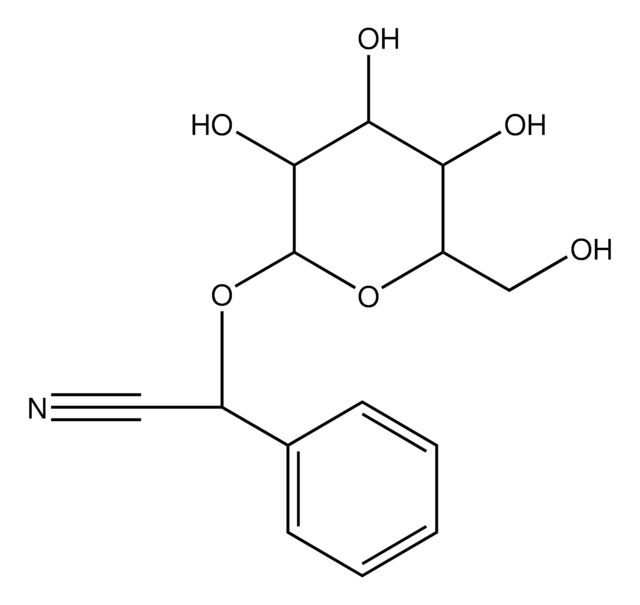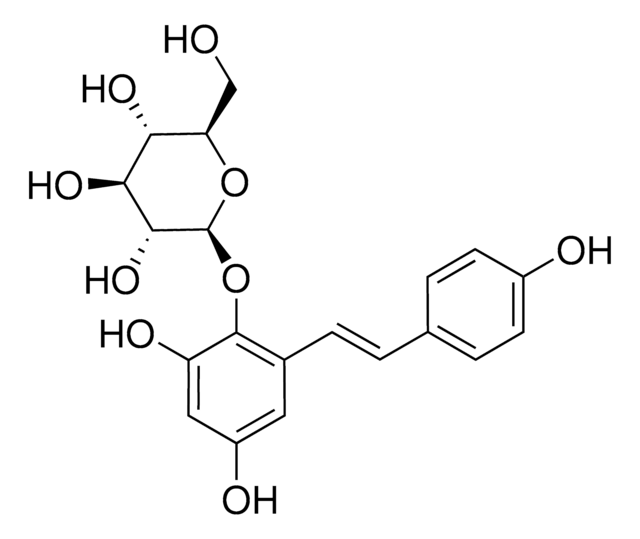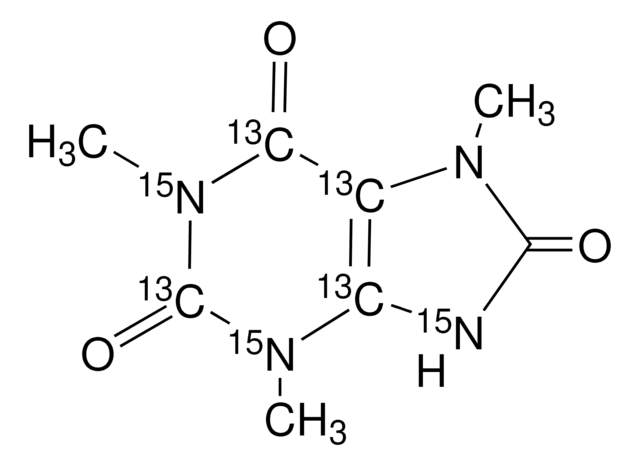SMB01068
Licoricidin
≥90% (LC/MS-ELSD)
Synonim(y):
(+)-Licoricidin, 7-O-Demethyllicorisoflavan A, Licorisoflavan B
About This Item
Polecane produkty
Próba
≥90% (LC/MS-ELSD)
Postać
solid
Zastosowanie
metabolomics
vitamins, nutraceuticals, and natural products
temp. przechowywania
−20°C
InChI
1S/C26H32O5/c1-15(2)6-8-19-22(27)11-10-18(25(19)29)17-12-21-24(31-14-17)13-23(28)20(26(21)30-5)9-7-16(3)4/h6-7,10-11,13,17,27-29H,8-9,12,14H2,1-5H3/t17-/m0/s1
Klucz InChI
GBRZTUJCDFSIHM-KRWDZBQOSA-N
Powiązane kategorie
Opis ogólny
Zastosowanie
Działania biochem./fizjol.
Cechy i korzyści
- Suitable for Biochemical and Biomedical research
- Versatile and adaptable for wide variety of laboratory and research applications
Inne uwagi
Kod klasy składowania
11 - Combustible Solids
Klasa zagrożenia wodnego (WGK)
WGK 3
Temperatura zapłonu (°F)
Not applicable
Temperatura zapłonu (°C)
Not applicable
Certyfikaty analizy (CoA)
Poszukaj Certyfikaty analizy (CoA), wpisując numer partii/serii produktów. Numery serii i partii można znaleźć na etykiecie produktu po słowach „seria” lub „partia”.
Masz już ten produkt?
Dokumenty związane z niedawno zakupionymi produktami zostały zamieszczone w Bibliotece dokumentów.
Nasz zespół naukowców ma doświadczenie we wszystkich obszarach badań, w tym w naukach przyrodniczych, materiałoznawstwie, syntezie chemicznej, chromatografii, analityce i wielu innych dziedzinach.
Skontaktuj się z zespołem ds. pomocy technicznej